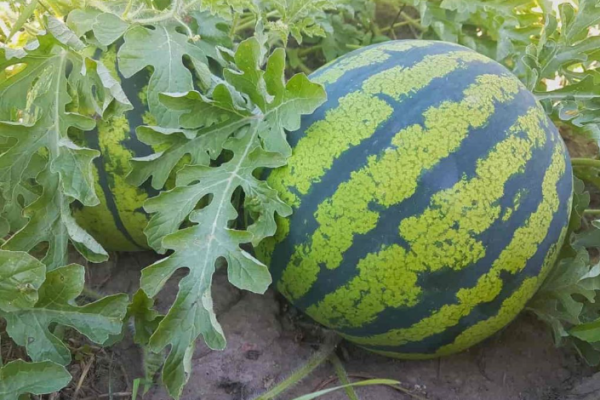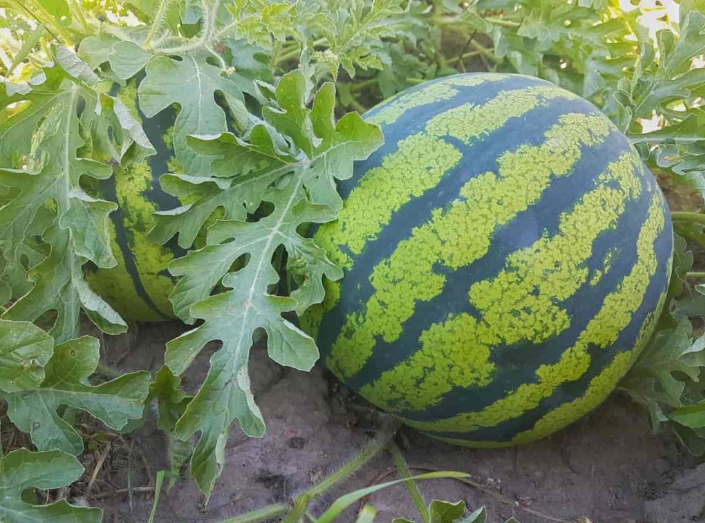Common Problems of Watermelon Plants: How to Fix Them, Solutions, and Treatments
Common Problems of Watermelon Plants: How to Fix Them, Solutions, and Treatments

Watermelon is one of the most famous summer fruits. Unfortunately, not everyone gets pleasure, especially when Watermelon plant diseases otherwise derail well-placed garden projects. Watermelons are easy to grow, and no matter what type you pick, you know you are for a real treatment until you find Watermelon plant pests. Let’s check out a few common problems of Watermelon plants below.

However, diseases that attack leaves reduce fruit quality by exposing melons to sunburn. Moreover, fruit sweetness and normal ripening depend on healthy leaves. Therefore, when the disease affects fruits, they are generally unmarketable and are prone to decay, resulting in damage during shipment and transit. Fortunately, it is generally possible to manage Watermelon diseases and achieve consistent production and quality.
22 Common problems of Watermelon plants
Early flowers do not bear fruit
There may not be enough pollination, mostly bees.
Solution – Hand-pollinate using a paintbrush. The activity of the fly may be reduced due to cold weather or pesticides.
Watermelon seedlings dying
You look closely at the plant and find the stem wilting where it comes out of the ground. Pull the seedlings one, and it comes out with a barbed and rotten root net.
Solution – One of the best ways to prevent damping-off is to avoid sowing Watermelon seeds directly into the soil. Instead, you can start them indoors in a small pot or seedling tray. It allows you to provide warm temperatures for delicate seedlings. Then, when the soil outside gets quite hot, you can transplant the seedlings. Another solution is to eliminate fungi from fungicides, including azoxystrobin and metalaxyl. Turn the soil before applying fungicides and let it sit under the sun for two weeks before transplanting the Watermelon seedlings.
Watermelon drooping flowers
On the Watermelon vine, male flowers first open, and after about two weeks, the female flowers bloom. Male flowers are expendable. They have only one task, producing pollen to pollinate the substance, and, after that, they fade and fall. But sometimes, they fell long before the female flowers opened. While it may seem serious, it is pretty standard for male flowers to fall before they accomplish their mission in life.
It should not be a cause of danger unless you lose a lot of male flowers simultaneously. On the other hand, female flowers do not tend to fall because the fruit will develop at the center of the flower. So if your female flowers start falling, it may mean that the flowers do not pollinate in time.
Solution – If your garden doesn’t attract many pollinators, pick a male flower and make sure the pollen-filled stamen sticks out. Then, drop the stamen in the female flower and shake it some. Rub it from inside the pistol for good measure. Repeat with other female flowers using different male flowers. Vines can be malnourished, and to protect energy and resources, it starts shedding flowers quickly.
Feed the plant with slow-release organic manure as soon as the first buds emerge. Fill your garden with Lavender, Pussy willow, Blue Borage, Crocus, Marjoram, Lilac, and Abelia that attract bees and butterflies. The more pollinators you have, the better the chances of the male pollinating the female flowers before it falls.
Watermelon is rotting on the bottom
Any pathogen does not cause Watermelon blossom end rot; it results from fruit that lacks the calcium to grow properly. When fruits grow fast, they need a lot of calcium, but it doesn’t move very well through the plant, so they will decrease if it is not available in the soil. Calcium deficiency eventually causes rapidly developing cells in fruits to fall on themselves, turning the end of the Watermelon flower into a black, leathery lesion. Flowers rot in Watermelon is a calcium deficiency, but adding more calcium alone will not help the situation.
Solution – Remove the damaged fruits from the vine as quickly as possible to encourage your plant to start new flowers, and check the soil around your vines. Check the pH, it should be between 6.5 and 6.7, but if it’s less than 5.5, you’re having a problem, and you’ll need to modify the bed quickly and gently.
Watermelon plants keep dying
If the soil and plant roots are allowed to dry, the vines and leaves will wilt, shrivel up and die.
Solution – Add a thick layer of mulch around the plants to conserve water and protect the evaporation slowly from the soil.
Watermelon plants are not flowering
Watermelon vines have no flowers, and you will have no fruit, and the vines are not decorative enough to justify the trouble you go through. Check your vine is growing in the best of conditions.
Solution – Soil is loamy, rich, and well-drained. Mulch maintains moisture in the soil independently and prevents weeds from competing with the vine on resources. A high concentration of nitrogen stimulates the growth of leaves and roots at the expense of flowers. Use more fertilizer on phosphorus and less fertilizer on nitrogen to encourage flowers.
Hollow heart Watermelon
The problem of a hollow heart is common, especially in Watermelons without seeds. One theory is that the growing conditions around the vine were not the best, especially during the pollination, which causes this problem. In addition, not enough pollen in the female flower after rubbing the male flower affects the growth of the fruit well in the final stages.
Another aspect of the problem is nutrition in the soil. Boron is an essential factor for Watermelon as it boosts the growth of healthy seeds. A lack of Boron can prevent seed formation inside the fruit that leaving a gap in the middle of ripe Watermelon.
Solution – Make sure the vine has enough male flowers to pollinate the female. If you grow a variety that does not grow male and female flowers, apply other vines to provide pollen. Side dress the Boron as a plant food supplement. You should apply it around blooming time and long before fruit development.
The fruit is of the wrong shape, or the taste is bitter.
Possible reasons are inadequate pollination, dry soil, high temperatures, and poor soil fertility.
Solution – Ensure that bees and pollinators can reach flowers, keep soil evenly moist when melons are developing; use drought and drip irrigation in mulch to maintain soil moisture, add aged compost to bed, and side-dress melons with aged compost.
Watermelon growth stopped
As a hot zone plant, Watermelon thrives in temperatures between 30 to 32°C a day and 15°C at night. Unexpected weather conditions that cause temperatures to fall below these ideal levels can prevent the growth of the vine and its produced fruits. If you try to grow vine clay or heavy soil, you will get unwanted results, including small fruits. The soil must be loamy, rich, and well-drained.
You can raise it on mounds about a foot high to improve drainage. Poor pollinated female flowers will produce stunted fruit. Make sure your garden is buzzing with pollinators, and the vine has enough male flowers. Different pests and diseases affect the size of the Watermelon fruit.
Solution – Make sure the vine grows healthy and has a root system. You can wrap the vine with a tarp to keep the soil warm if the temperature drops at night. Get rid of pests and make sure there are no competitive plants near the vine.
Watermelon splitting
The problem occurs after the Watermelon fruit grows to full size but is yet to ripen. There is a deep crack towards a perfectly healthy fruit. The main reason behind this is inadequate water samples. If you allow the soil to dry, pour more water on it, and the fruits will open under the pressure of more water. It can also happen after heavy rains, which leave the soil waterlogged. Watermelon may also burst due to a sudden temperature rise. Heat creates pressure inside raw fruit, causing the hard shell to burst.
Solution – Observe the water samples of Watermelon faithfully. It is another reason you should grow Watermelon in well-drained soil. Even if it rains too much, the soil will absorb water before the vine’s roots can take too much moisture to create a stress imbalance within the fruit. As far as the sudden rise in soil temperature is concerned, you can use mulch to split Watermelon. Cover the soil around the vine with a thick mulch surface to act as insulation and protect the juicy orbs.
Pests
Aphides
Small and appearing in almost any color you can imagine; the aphides do damage for their size. In addition, colonies suck the juice from your Watermelon leaves and emit a sticky residue that can attract a sooty mold.
Solution – If you focus a hose on them every day until their numbers are beaten back, you can treat the Aphids without chemicals. If you’re leaving hard chemicals out of the garden, you’ll have plenty of predators to take out the stragglers.
Armyworms
Armyworms are a big problem if they are in your garden. Unlike other caterpillars, armyworms eat as a group for most of their lives, quickly skeletonizing leaves and scarring fruit.
Solution – Like any caterpillar, they can be picked up by hand when feeding. Still, if your Armyworm problem is very severe, you can be better off applying Bacillus thuringiensis or spinosad to your Watermelon plants.
Cucumber beetles
These pests don’t even try to hide their damage to your Watermelon patch and often feed openly on leaves and flowers.
Solution – If your Watermelons are working on arranging fruit, they’re probably old enough to bear the loss of the cucumber beetle. Still, if the beetles start eating flowers, you’d like to devote some time to spraying them with insecticidal soap and picking any pest by hand. Next season, use the floating row cover on your Watermelon before helping to prevent cucumber beetle problems.
Leaf miners
Leaf miners produce some of the most dramatic visible damages in the garden without damaging most plants. Watermelon leaves will look like something painted white, with wandering lines on their surfaces and white stains to go along these tunnels.
Solution – If it bothers you and is limited to a few leaves, you can always pick them up.
Spider mites
These pests suck the juice from Watermelon leaves, causing small yellow dots to appear on all affected levels of the leaf.
Solution – Treat spider mites weekly with neem oil until your plants are healthy again.
Diseases
Bacterial fruit blotch
The leaves may be brown, but the most dramatic sign is on the fruit. The peel can burst, and a sticky, yellow liquid can flow.
Solution – Copper fungicides can control if their application detects symptoms of bacterial fruit blotch.
Downy mildew
Downy mildew is notable for the angular leaf spots as it works through Watermelon leaves. They may start as yellow areas but soon turn brown with purple seeds under the affected leaves.
Solution – Fortunately, downy mildew won’t attack fruit, but it can reduce production by weakening your plants. Neem oil can control this mildew.
Posted
3 years ago
No comments yet! Why don't you be the first?











Add a comment